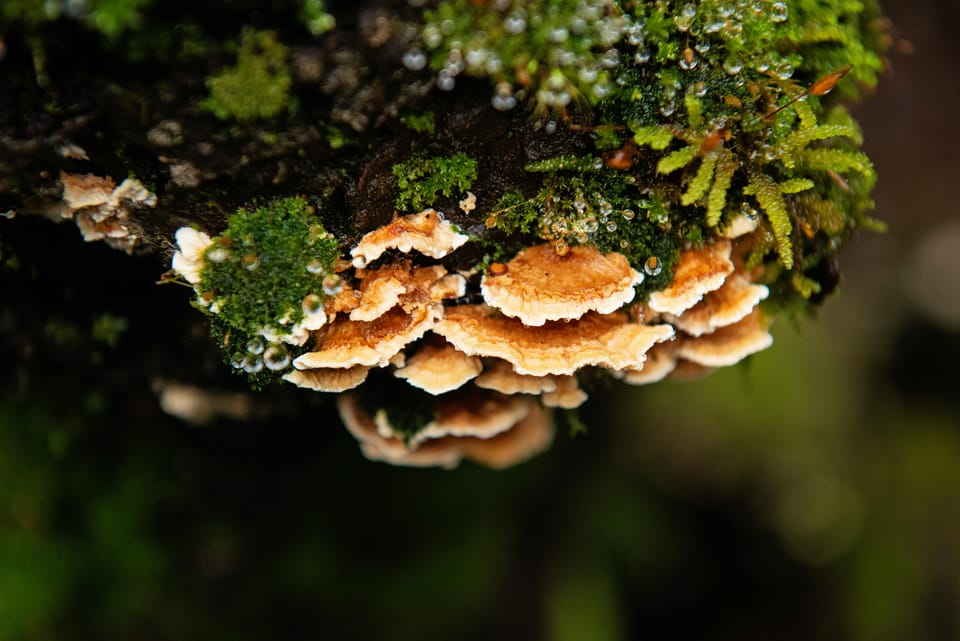Friday Inspo: Biomaterials

Here are the cool things I found this week: I'm really enjoying reading about Mushrooms in the book An Entangled life by Merlin Sheldrake: They can change our minds, heal our bodies and even help us avoid environmental disaster; they are metabolic masters, earth-makers and key players in most of nature's processes.
1. Cosmoderism
Polish artist Kamil Czapiga, known as Cosmodernism, merges chemistry, macro photography, light, and sound design to create mesmerizing video art, all without CGI.
2. Notpla
I'm a HUGE fan of seaweed start-up Notpla. Plastic is an addiction we haven’t kicked yet, but algae might be our rehab. Seaweed-based materials are replacing plastic packaging with biodegradable, edible, and even nutrient-rich alternatives. The startup Notpla developed an edible water pod for marathon runners and a fully biodegradable seaweed film, proving that single-use doesn’t have to mean forever.
3. Cyanotype printmaking
Step into the world of large-scale cyanotype printmaking with Daydreams III, an A0 artwork capturing a dancer suspended mid-leap. This video takes you behind the scenes, from preparing and exposing to developing a cyanotype at this immersive scale, where the sun itself becomes a collaborator.
Cyanotype is a lesson in patience and unpredictability. The chemistry reacts to UV light, shifting conditions alter exposure times, and the final print is always a surprise. It’s a process that demands trust—letting go of perfection to embrace the beauty of the unexpected.
Watch as this print unfolds, layer by layer, beneath the open sky. If you’re drawn to traditional photographic techniques, alternative printing, and the meditative nature of slow art, this video is for you, thanks to Sophia Jenny:
4. BIQ House
What if the walls around us could breathe? Some architects are now incorporating bio-integrated façades using algae-filled panels that filter CO2, generate oxygen, and even produce energy. AI helps design optimal growth patterns, ensuring that these living structures evolve efficiently over time. The BIQ House in Hamburg, for example, uses an algae-powered façade that generates biomass, turning its walls into a functional energy source.
5.Slow Typography
Graphic designers are experimenting with slow typography: letterforms that evolve, degrade, or respond to their environment over time.
I love this study on biodegradable typography, where letters are grown from mycelium or algae, designed to decay and return to nature. Generally though, mushrooms are amazing.
Human prompt
Imagine designing a brand identity where the typography isn’t static but lives and transforms over time. How would that change the way we think about branding, permanence, and meaning?
